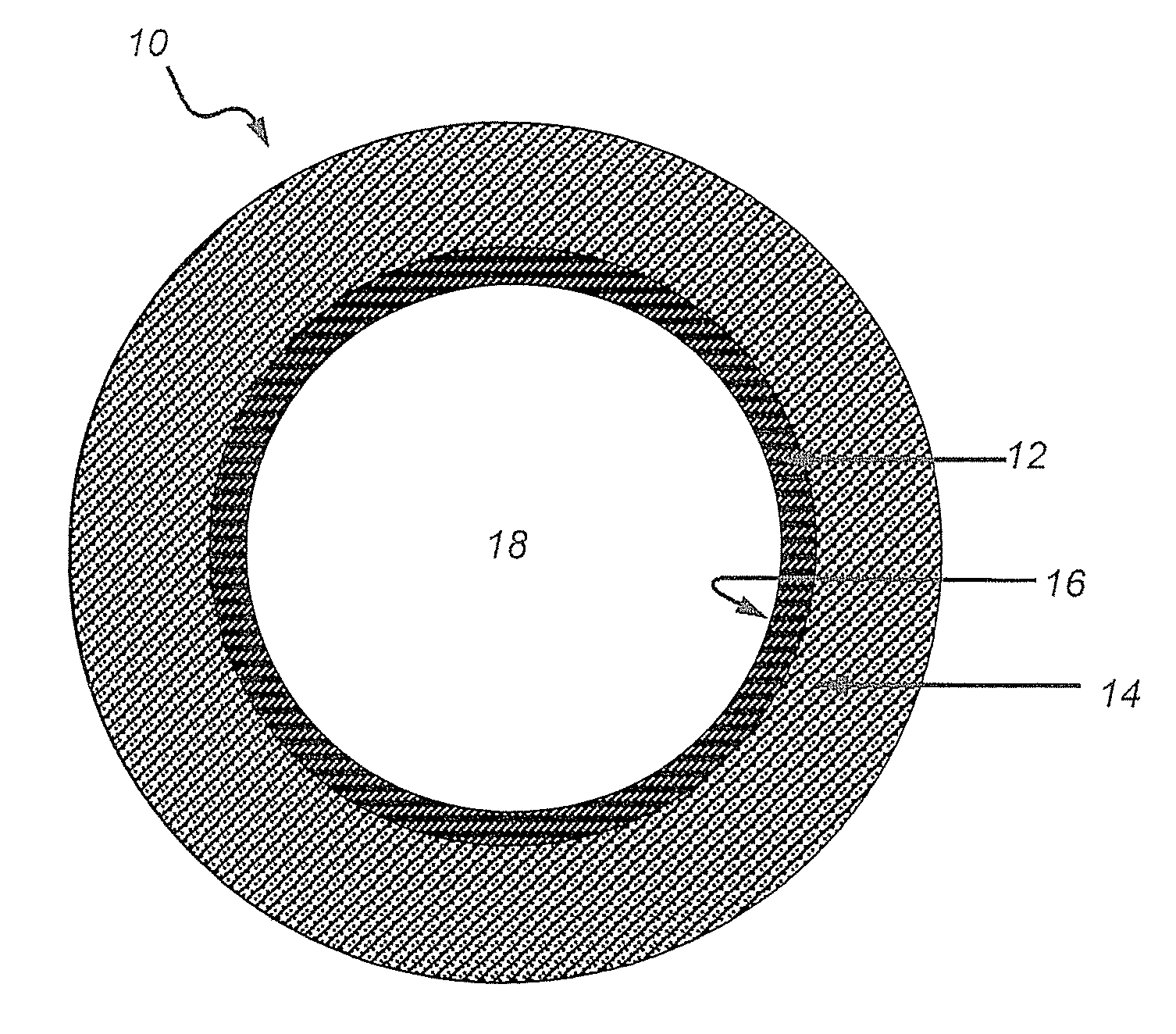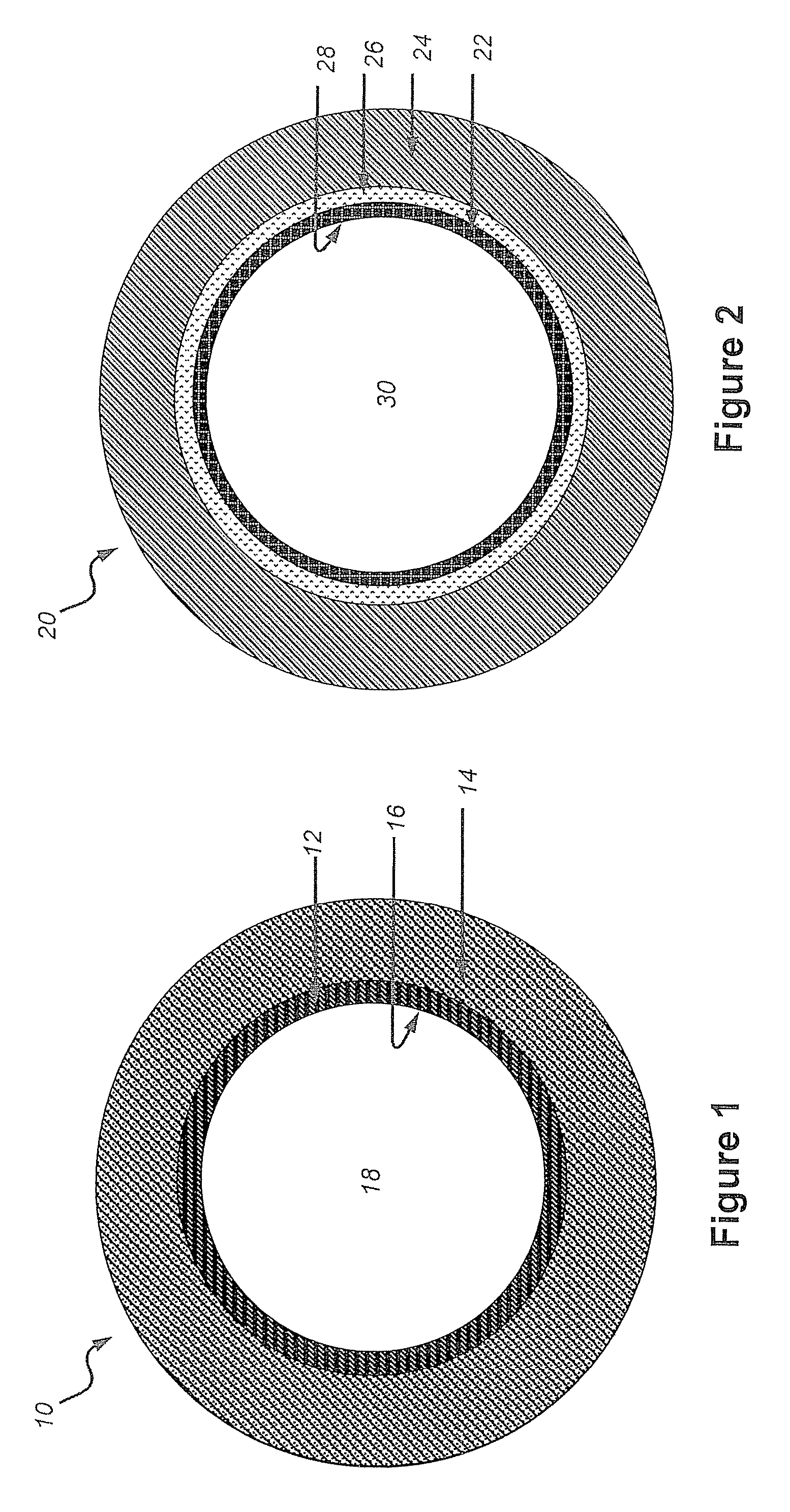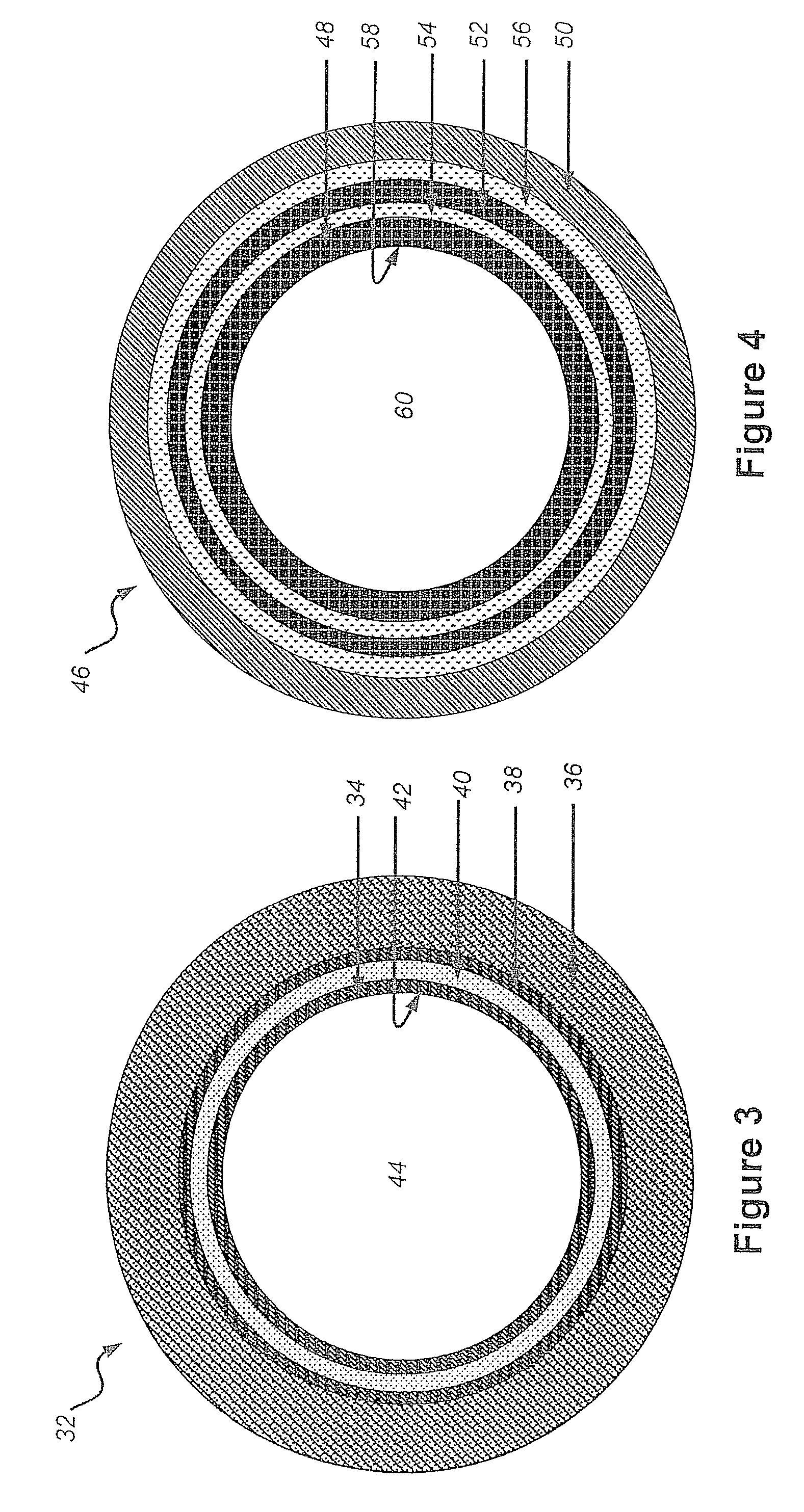Impervious, chemically stable thermoplastic tubing and film
a thermoplastic tubing and film technology, applied in the field of thermoplastic tubing and film, can solve the problems of lowering the carbon dioxide content of beverages, the plastic tubes currently used suffer from self- and cross contamination problems, and the safety of human health, so as to maintain the freshness and taste of beverages, maintain the freshness and taste, and maintain the effect of freshness
- Summary
- Abstract
- Description
- Claims
- Application Information
AI Technical Summary
Benefits of technology
Problems solved by technology
Method used
Image
Examples
example 1
[0071]The barrier properties of a layered tubing comprising an inner layer composed of polyester sold under the trademark VORIDIAN PET 9921W were tested for flavor permeability in a specially designed experimental set-up which is illustrated in FIG. 7. As shown, use was made of a glass jacket 72 comprising ID a sleeve 74 and a tubular branch 76 extending laterally from the sleeve 74, the tubing 78 to be tested extending inside the sleeve 74 and through seal members 80 at the ends of the sleeve. The tubular branch 76 is provided with a septum 82 through which the needle of a sampling syringe can penetrate. The tubing 78 is connected at its ends to inlet and outlet valves 84,86 by conduits 88 extending through seal members 90.
[0072]The jacket 72 was filled with high purity water contacting the outer surface portion of the tubing 78 inside the sleeve 74. The tubing 78 was filled with root beer, by opening valve 84 and closing valve 86, and was allowed to stand for about 15 days at room...
example 2
[0074]A layered tubing comprising an inner layer composed of polyester sold under the trademark VORIDIAN PET 9921W was filled with high purity water and was allowed to stand for 15 days. The water was then analyzed by Inductively Coupled Plasma for various metals. The objective was to determine if any metallic contaminants were present in the tubing since contamination may have occurred by the use of catalysts during the production of the polymeric materials. The results are shown in Table 2. These results indicate that the tubing does not contribute any metallic impurity to the water and that the water remains unaffected, thus meeting the drinking water objectives.
TABLE 2Water Sample fromParameterHigh Purity WaterInside of TubingMAC*Tested(mg / L)(mg / L)(mg / L)AluminumN.D.N.D.0.10ArsenicN.D.N.D.0.025Barium0.0010.0011.0Boron0.0100.0125.0CadmiumN.D.N.D.0.005Calcium0.140.10—ChromiumN.D.N.D.0.05CobaltN.D.N.D.—CopperN.D.N.D.1.0Iron0.0030.0030.30LeadN.D.N.D.0.01Magnesium0.010.02—Manganese0.0...
example 3
[0075]High purity water was kept inside a layered tubing comprising an inner layer composed of polyester sold under the trademark VORIDIAN PET 9921W at room temperature for 10 days. The contained water was then scanned for possible organics by the technique of GC / MS using a Hewlett Packard GC / MS fitted with a Tekmar purge and trap. The results are shown in Table 3. These results further confirm, that the inner layer of the tubing, composed of VORIDIAN PET 9921W, does not contribute any organic volatile impurities to the water and that the water remains unaffected.
TABLE 3Water Samplefrom Inside ofMaximum DrinkingBlank waterTubingWater LimitParameters(mg / L)(mg / L)(mg / L)BenzeneN.D.N.D.0.005TolueneN.D.N.D.0.02XyleneN.D.N.D.0.30Ethyl BenzeneN.D.N.D.0.002Volatile OrganicsN.D.N.D.0.01TrichloroethyleneN.D.N.D.0.05TrihalomethaneN.D.N.D.0.35Other OrganicsN.D.N.D.N.D. = Not Detected (
PUM
| Property | Measurement | Unit |
|---|---|---|
| melting point | aaaaa | aaaaa |
| density | aaaaa | aaaaa |
| density | aaaaa | aaaaa |
Abstract
Description
Claims
Application Information
 Login to View More
Login to View More - R&D
- Intellectual Property
- Life Sciences
- Materials
- Tech Scout
- Unparalleled Data Quality
- Higher Quality Content
- 60% Fewer Hallucinations
Browse by: Latest US Patents, China's latest patents, Technical Efficacy Thesaurus, Application Domain, Technology Topic, Popular Technical Reports.
© 2025 PatSnap. All rights reserved.Legal|Privacy policy|Modern Slavery Act Transparency Statement|Sitemap|About US| Contact US: help@patsnap.com



